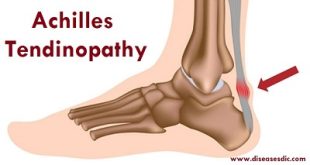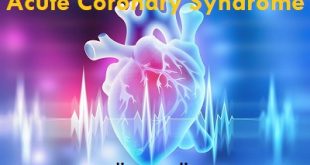Definition
Astigmatism is the defects in the curvature of the cornea. If the curvature of the cornea and lens is mismatched, this will allow the light inside eye in different angles. This condition leads eye discomfort, headaches and blurred or fuzzy vision.
History
1793- As a student, Thomas Young discovered that he had problems with one eye. Then he did research on his vision problems.
1801- He presented his findings in a Bakerian Lecture. Independent from Young, George Biddell Airy discovered the phenomenon of astigmatism on his own eye.
1825- Airy presented his observations on his own eye at the Cambridge Philosophical Society.
1825- Airy produced lenses to correct his vision problems. When Airy obtained cylindrical lenses from an optician from Ipswich. The name for the condition was not given by Airy, but from William Whewell.
1860- Astigmatism was a well-established concept in ophthalmology, and chapters in books described the discovery of astigmatism.
Epidemiology
Astigmatism is a prevalent refractive error, accounting for as much as 13% of all refractive failure. The prevalence of astigmatism varies with age, with a high prevalence (approximately 20%) in the first months of life when the curvature of the cornea is very steep. Some studies have found a predominance of with-the-rule (WTR) astigmatism in infants, while others have reported a predominance of against-the-rule (ATR) astigmatism in that age group. As infants grow older, the cornea flattens and the prevalence of high degrees of astigmatism (>1 dioptre) decreases, reaching a level of 4.8% of preschool children, with most instances being WTR astigmatism. Around 63% of young adults aged 20 to 30 years exhibit 0.25 dioptre or more of astigmatism, although only a few have an astigmatism >1 dioptre. In another study, 46% of the total population had corneal astigmatism >0.5 dioptre, but only 4.7% exhibited astigmatism >1.5 dioptre, predominantly WTR. After 40 years of age, the astigmatism axis shifts, from a predominance of WTR to a predominance of ATR, probably due to changes in the corneal curvature.
Some ethnic groups show a higher prevalence of astigmatism; East Asian people show a relatively high prevalence of astigmatism, perhaps due to the greater tightness of the Asian eyelids and narrower palpebral apertures. Among Singaporean children, according to a prospective cohort study, 19.3% had astigmatism with a cylinder power of 1 dioptre or worse. In preschool Chinese children, a prevalence of 21.1% was found, and follow-up evaluation in a subset of these children showed that a significant percentage of children had stable and even increased astigmatism. Native American people have an increased prevalence of high levels of astigmatism (>1 dioptre). It has been postulated that the major underlying factors are hereditary and nutritional. Other ethnic groups at increased risk of astigmatism are those of Hispanic origin and the indigenous people of Brazil.
Types of Astigmatism
There are several types but three most common types are as follows:
Myopic: The one or two principal medians are near sighted. Should both the meridians be near sighted, they are myopic in changing degree.
Hyperopic: one or two principal medians are far sighted. Should both the meridians be farsighted, they are hyperopic in changing degree.
Mixed: One principal meridian is near sighted and the other is farsighted.
Risk factors
It occurs in both children and adults. Risk may be higher if a person has any of the following:
- Family history of astigmatism and eye disorders such as keratoconus
- Thinning or cone shaped of your cornea
- Excessive near sightedness, which creates blurry vision at a distance
- Excessive farsightedness, which creates blurry close-up vision
- A history of eye surgery, such as cataract surgery (surgical removal of a clouded lens)
Causes of Astigmatism
It is mainly caused by the irregular shape of the cornea, which is called corneal astigmatism. It might be from the birth or later in life due to injury, disease and surgery in the eye. The exact cause is unknown. In a few cases, it is caused by the shape of the lens inside the eye which is called lenticular astigmatism.
Difference between regular and irregular cornea
In rare cases it is caused by a rare condition called keratoconus in which the cornea become thinner and cone shaped. This leads to loss of vision that cannot be corrected with eyeglasses. Usually keratoconus condition needs contact lenses to get clear vision and may need a corneal transplant.
Symptoms
Symptoms include:
- Blurred or distorted vision
- Eyestrain or discomfort
- Headaches
- Difficulty with night vision
- Squinting
Diagnosis and test of Astigmatism
It is commonly diagnosed by comprehensive eye examination. This examination undergoes for measuring how the eyes focus light and it determines the power of the lenses required for better vision. The tests may include:
Visual acuity test:
This assessment text will be conducted by asking the patient to read the letter from the chart at a particular distance to examine how well patient can see the letters.
Keratometry:
It is the instrument used to measure the curvature of the cornea by focusing the light on the cornea and it calculates the reflection of the light. From the results of reflection, it is possible to determine the curvature of the cornea surface. These measurements are used to determine the proper fit for the contact lenses.
Refraction:
For refraction test the instrument called refractor is used. This machine contains multiple corrective glass lenses of different strengths. To conduct the test patient should read a chart through the lenses which having different strengths on the optical refractor. At the end of the test doctor will finds a lens that fits the patient’s vision.
Child at the eye doctor being tested for astigmatism with glass lenses
Treatment of Astigmatism
There are some several options available to get back clear visions.
Contact lenses:
Some people will get better vision with contact lenses rather than eyeglasses. It provides cleaner vision and a broader view. Though it is wears directly on eyes it needs proper care and cleaning of the lens to keep your eyes safe.
Eyeglasses:
Mostly people use eyeglasses to improve their vision. The cylindrical lens which is present in the eyeglasses will compensate astigmatism. It provides additional power to the certain parts of the lens.
Orthokeratology (Ortho k):
It involves fitting the suitable lenses to reshape the cornea. The patient wears contact lenses for a short period of time and removes after overnight. People with moderate astigmatism will get a temporary clear vision in their daily activities. Orthokeratology doesn’t give permanent cure. If the patient stops wearing lenses, they may get back into their original condition.
Laser and other refractive surgery procedures:
Astigmatism can also be treated by reshaping the cornea by using two techniques such as LASIK (laser in situ keratomileusis) it removes tissue only from the inner layer of the cornea or PRK (photorefractive keratectomy). It removes tissue from the superficial and inner layers of the cornea.
Prevention of Astigmatism
There is no prevention for astigmatism. But the regular preventive care will detect the problem early and keep the corrective lenses up to date.
Adults should undergo periodic eye tests:
- Every 2-4 years between ages 40 and 55
- Every 1-3 years from 55-65
- Every 1-2 years after 65
- More frequently if recommended by your physician.
 Diseases Treatments Dictionary This is complete solution to read all diseases treatments Which covers Prevention, Causes, Symptoms, Medical Terms, Drugs, Prescription, Natural Remedies with cures and Treatments. Most of the common diseases were listed in names, split with categories.
Diseases Treatments Dictionary This is complete solution to read all diseases treatments Which covers Prevention, Causes, Symptoms, Medical Terms, Drugs, Prescription, Natural Remedies with cures and Treatments. Most of the common diseases were listed in names, split with categories.








This app is wonderful but please write -ups on things like foods that boost sex drive,
prostate cancer, goitre, homosexuality, acne, protein diet, sanitation and hygiene. Thank you
we will work it out as soon as possible for the above things which you have mentioned.
thank you so much for this up it is very helpful for me thanks once again
it helps me this up i don’t know how to thank you thank you so much
it very important for me this upp so well done the group of this upp i want to request from you this upp doen’t contain all diseases i want you add all diseases
this is app is helpful what can i do to stop using reading glass thank you
The only way to not use glass is surgery such as LASIK.
I don’t know,the cost involved the test,is it for the patient or yours
Cost will vary based on physicians. and it is for patient.
sir, your app is wonderful but sir please add some orthoptic topic. also add some eye related disease. I am an optometry student. so I need it.. plz sir.
Sure we will update more topics on eye problems. Stay tuned. Thank you.
i have an allergy of using lenses thats why i have no option…
i have to use glasses and glass number is very high
Please consult with ophthalmologist. It is advised Get frequent testing of your eye power.
Thank you sir..
I would like to appreciate you and the team for your great services of knowledge sharing, thanks so much. I lost sight in one of my eyes due to a stone hitting my eye causing injury, what can I do to regain my sight and where in Nigeria should I get this service, thanks.
Consult an ophthalmologist immediately.
If this app is helpful to the body,what are the herbal ways of stopping it.
eat Indian gooseberry, bilberry, green tea, cassia seed, wolfberry and use turmeric for cooking,
what are the natural ways of preventing it.
Daily do eye Exercise and eat fruits and vegetables that contains Vitamin C & Vitamin E.
I am 32 years now,my problem is,when i’m leading always tears are rolling out,and feel pain like itching inside eyes. what can I do?
consult a doctor as soon as possible to get rid of this problem.
hlo sir / mam there is also not mentioned about strabismus (squint).. please add this